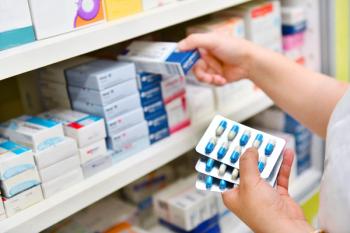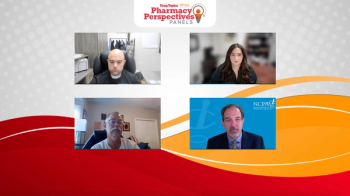
- Total Pharmacy® June 2023
- Volume 01
- Issue 03
Total Pharmacy Solutions Summit: Integrated Technology Helps Community Pharmacies Improve Health Outcomes
Technology can bolster and optimize independent pharmacies’ delivery of clinical services.
Community pharmacies face numerous barriers when trying to implement clinical opportunities or programs into their daily workflow. These obstacles can include a shortage of staff capable of performing interventions, inefficient technology platforms, an inability to bill as providers at the federal level, and difficulty obtaining contracts with health plans, pharmacy benefit managers, or pharmaceutical companies.
As health care providers, community pharmacists directly interact with patients and are trained to manage any problems related to medication. For this reason, it’s essential they be properly equipped to deal with any issues that arise, such as patient nonadherence to medications. Medication nonadherence can result in a myriad of negative outcomes, including reduced functional abilities, lower quality of life, disease progression, and increased utilization of medical resources (eg, hospital admissions).
Transaction Data Systems (TDS), a software solutions company, is working to bring opportunities to community pharmacies with the goal of maximizing care for patients. The company accomplishes this goal by providing independent pharmacies with integrated technology that enhances pharmacy enablement, patient engagement, clinical care coordination, and business intelligence.
Dean Koskinas, PharmD, an executive sales consultant at TDS, joined the April 2023 Total Pharmacy Solutions Summit to discuss the best ways to integrate technology into all aspects of a pharmacy. In his session titled “Beyond the Counter: Leveraging Clinical Opportunities for Success,” Koskinas discussed how TDS helps community pharmacists improve health outcomes.
“TDS is a strategic partner for our clients,” said Koskinas. “We are absolutely dedicated to giving them insightful business intelligence through confident, compliant, and integrated clinical pharmacy solutions. One of TDS’ company goals is to empower our clients to grow and maintain their patient base through optimized delivery of care.”
A few different models for clinical interventions are available for community pharmacies to leverage, such as chain contracts, closed networks, direct billing through a collaborative practice agreement, and internal organization programs. However, a tech-enabled intervention model like the one TDS provides offers many advantages. Tech-enabled interventions enable pharmacies to identify interventions, put them in a streamlined display, create accurate documentation, and diversify revenue streams through value-based agreements.
The integrated model from TDS lists every clinical opportunity in one place so that community pharmacists can quickly see each one. Similar to a prescription queue, the model shows the patient, the opportunity, and the needed intervention. It also allows for contract coordination with payers, analytics done in a central model for network pharmacies, and coordinated and timely display of interventions. Additionally, the model has one point of processing for payments, which can help alleviate the paperwork required to contract each payer.
“With all of this coordination, the pharmacy can now focus on performing these interventions,” Koskinas said. “They don’t have to worry about documenting because of the streamlined documentation system, and…this is going to help diversify revenue by completing these clinical opportunities.”
To demonstrate how integrated clinical interventions can be successful in community pharmacies, TDS completed a 2-month trial with a national health plan. The pilot program included 2 value-based interventions—a gap-in-therapy and adherence-based interventions targeting statins and diabetic medications—for a network of independent community pharmacies. The trial found that pharmacies completed 20% of adherence interventions over the study period, which resulted in significant clinical revenue earnings.
In total, $220,000 in clinical revenue was passed on to pharmacies from TDS for completed clinical interventions during the 2-month study period. Additionally, the trial results showed that even though the statin gap-in-therapy intervention (which required extra provider outreach) had a higher reimbursement rate, only 10% worked. In 2022, TDS ran a similar pilot program with a national plan that lasted for 6 months. In that trial, $500,000 in clinical revenue was passed on to pharmacies.
“Our ultimate goal is to get our network to be the highest-completing clinical intervention, nonclinical intervention network that’s out there,” Koskinas said. “We want to see that 20%, and we want to see it continue to grow to 30%, 40%. The higher completion rates we get, the easier it is for me to push more clinical interventions into the network. And it benefits everybody— your patient, your business. It’s a great model, and I’m really happy to see the movement we’ve seen so far.”
Koskinas added that TDS learned many different lessons from the 2 trials it has conducted. First, the company learned that patient-only interventions show greater success. Second, “value” will vary based on intervention type and outcome goal. Third, payers may want to vary the payments they offer throughout the year based on specific priorities. Fourth, repeated education and communication are required. And lastly, reporting must be customizable.
“At TDS, with our comprehensive solutions platform—this includes our integrated clinical opportunities, Opportunities Now, AideRX, and Prescribe Wellness—it allows for optimization… and patient engagement,” Koskinas said. “Our solutions enable pharmacies to go beyond the counter by leveraging clinical opportunities for success.”
Articles in this issue
over 2 years ago
DSCSA is Coming. Are you Ready?over 2 years ago
Technology Tools Can Improve Customer Serviceover 2 years ago
Creating and Leveraging Community Partnerships That Lastover 2 years ago
Pharmacists Find Marketing Success With Instagram, TikTokNewsletter
Pharmacy practice is always changing. Stay ahead of the curve with the Drug Topics newsletter and get the latest drug information, industry trends, and patient care tips.





























































































































